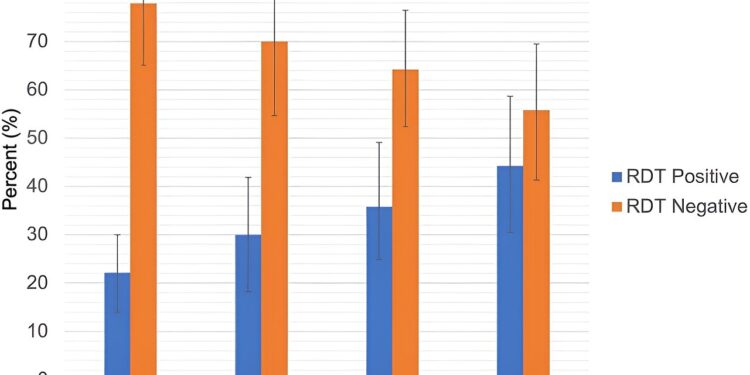Malaria prevalence by level of damage in households. Credit: Scientific reports (2023). DOI: 10.1038/s41598-023-49200-3
Although malaria has been eliminated in several countries, this mosquito-borne disease remains a major public health problem in sub-Saharan Africa. Mozambique has the fourth highest malaria prevalence rate in the region and is vulnerable due to a range of factors, including inadequate health infrastructure, limited access to prevention measures and climatic conditions conducive to mosquito breeding.
A new study from the University of Minnesota School of Public Health (SPH), published in Natureadds another factor to this mix: damage to residential structures due to severe weather.
Malaria transmission strongly depends on weather and climate factors: mosquitoes breed in greater numbers in wetter and warmer weather. Countries like Mozambique are seeing first-hand the impact of global climate change on local weather patterns. Over the past 35 years, Mozambique has experienced more than 75 declared natural disasters linked to floods, droughts and cyclones.
In 2019, Cyclone Idai, one of the worst tropical cyclones on record in the Southern Hemisphere, caused catastrophic damage to people, buildings and infrastructure across Mozambique. Poor housing conditions can increase interactions with mosquitoes, leading to increased risk of malaria in the short and long term, and hampering the effectiveness of disease control efforts.
Researchers sought to quantify the malaria risk associated with domestic damage caused by Cyclone Idai. They conducted a survey in Sussundenga, a rural agrarian village in western Mozambique, and found that almost a year after the storm:
- 64% of study participants lived in households that suffered damage during Cyclone Idai.
- The overall malaria prevalence was 31%.
- The risk of malaria infection was almost three times higher among participants living in damaged households.
- Malaria prevalence has increased with increasing household damage. Malaria prevalence was higher in households with significant damage (35.8%) or complete destruction (44.2%) than in households without damage (22.1%).
“Previous studies have used simulations and prediction models to explore the impact of climate change on malaria risk,” says Kelly Searle, SPH assistant professor and lead author.
“Using real-world observations, this study is among the first to conclusively demonstrate associations between climate change, extreme weather, and increased malaria prevalence.”
“We found that participants whose households were damaged by Cyclone Idai saw their malaria infections almost triple compared to those whose households suffered no damage in an area where malaria incidence was already high .Since our data was collected almost a year after Cyclone Idai, this is a major concern.”
The study also calls attention to the need for more effective long-term disaster response efforts, citing the fact that only one household interviewed by the researchers reported receiving aid from disaster response organizations. the aftermath of Cyclone Idai.
More information:
Kelly M. Searle et al, Long-lasting household damage from Cyclone Idai increases malaria risk in rural western Mozambique, Scientific reports (2023). DOI: 10.1038/s41598-023-49200-3
Provided by University of Minnesota
Quote: Storm damage to residences linked to higher prevalence of malaria in Mozambique (January 17, 2024) retrieved January 17, 2024 from
This document is subject to copyright. Except for fair use for private study or research purposes, no part may be reproduced without written permission. The content is provided for information only.



